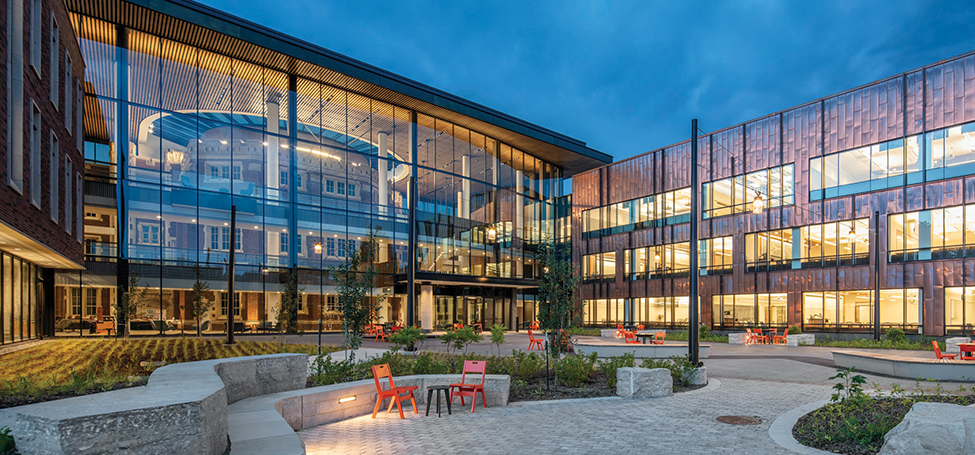
Moving forward, together
This spring, just as we were emerging from one of the most challenging years in the history of higher education, the College began thinking about the future of higher education. Where do we as a living, learning community want to be in five years? In 10 years? What priorities will help us continue to grow and develop into a community that lives our values and ideals? These are the questions at the heart of strategic planning, a process in which the College engages every 10 years or so.
The past 10 years at Grinnell have seen growth in staffing and institutional capacity across campus, all with the goal of supporting our academic program and student experience. Now, we find ourselves in a position to consider the remarkable developments that emerged out of our previous strategic planning initiative and to identify the areas to which we will devote time, attention, and resources over the next 10 years.
Earlier this year, President Anne Harris set out five strategic principles for our coming planning process. She identified community; educational excellence and continuity; diversity, equity, and inclusion; health and well-being; and financial sustainability as the areas on which we will focus our collective planning efforts.
This spring, we held a series of virtual town halls for staff and faculty, with one session devoted to each of the planning principles. The goal of these town halls was to start creating shared understanding of the planning principles. To support this effort, our team prepared research briefs, assembling and sharing data from partners across campus. These briefs illustrate where we find ourselves on a wide range of issues connected to the strategic planning principles and establish a shared understanding as we move forward.
The town halls prioritized time for questions and answers, comments, and discussion. The virtual gatherings provided an important opportunity to begin charting a way forward together. We have identified an approach to strategic planning called collective impact to guide our work. Collective impact planning prioritizes drawing people together into coordinated action across multiple organizations or, in Grinnell’s case, across a single institution that values individual and departmental initiative and creativity. The town halls were a step in this process.
In the fall, we will begin opening more opportunities for engaging in the strategic planning process, including sharing essays that President Harris prepared for each strategic planning principle and the accompanying town hall research briefs. We will be seeking input, insights, and ideas from staff, faculty, current students, alumni, and friends of the College to identify a range of initiatives that will help us advance the College’s mission in the midst of changing higher education and demographic landscapes.
“ … the strategic planning process can facilitate … a campus culture in which more and more people find a place of belonging and opportunities to thrive.”
Our community is coming off of a year spent largely apart from one another and collectively grappling with ongoing realities of racial injustice. We hope that the strategic planning process can offer a platform to help rebuild some of our old connections with one another and forge new ones as well. We hope, too, that the strategic planning process can facilitate consideration of what lessons to draw from our experiences of the past year. Doing so can help us work toward a campus culture in which more and more people find a place of belonging and opportunities to thrive.
Most of all, as strategic planning co-leads, we look forward to facilitating a process that draws on the Grinnell College community’s collective wisdom as we chart a future together.
